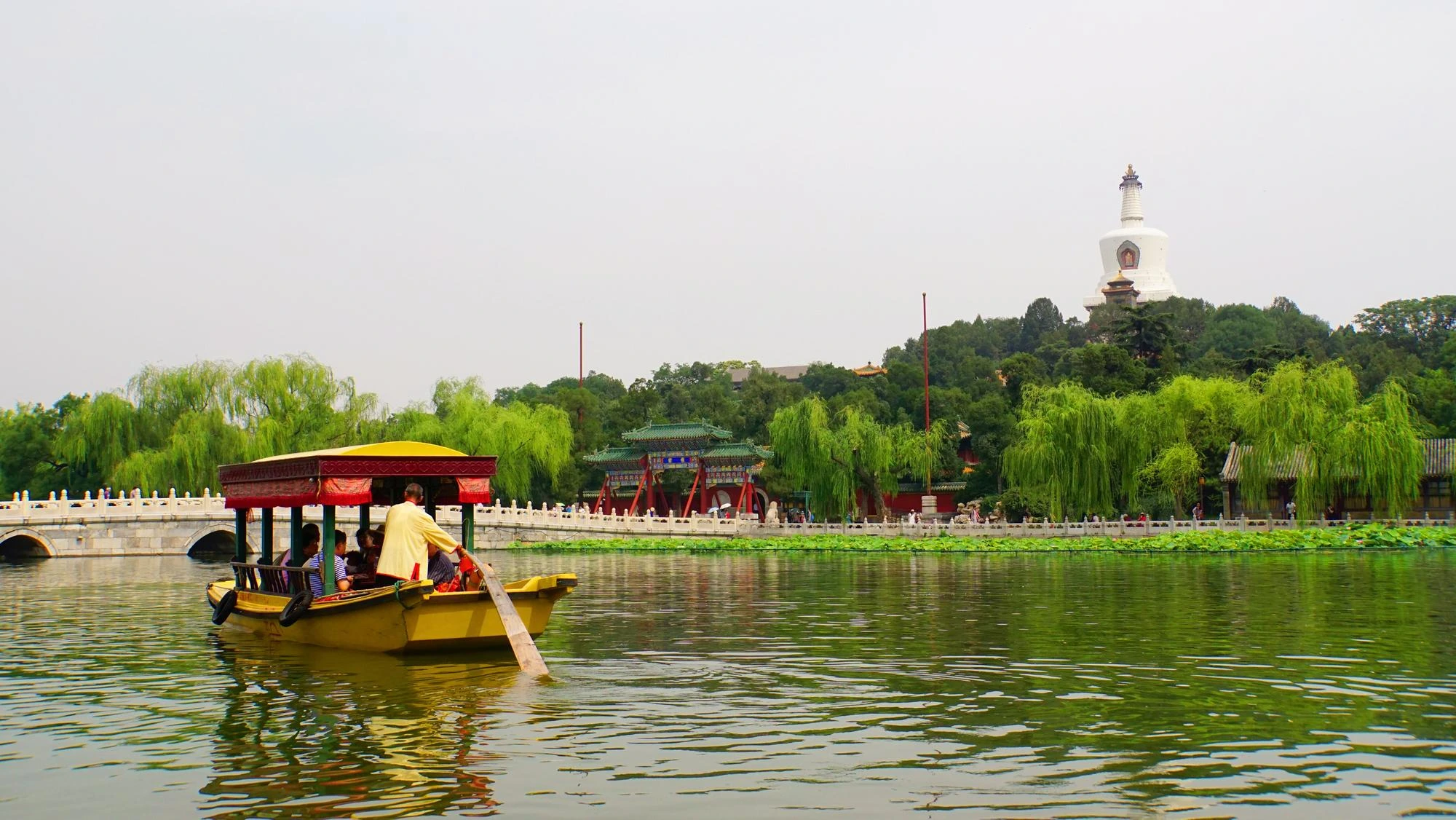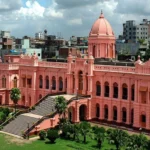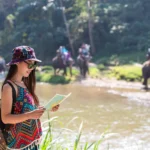If you’re searching for Bangladesh sightseeing places that blend wild nature, centuries-old heritage, and world-class hospitality, you’re in the right place. From the tiger-haunted mangrove creeks of the Sundarbans to the tea-green hills of Srimangal and the Mughal lanes of Old Dhaka, Bangladesh rewards curious travelers with experiences that feel intensely local—and refreshingly uncrowded.
This long-form guide is written for first-time and repeat visitors (especially travelers from the USA) who want practical, trustworthy advice grounded in real on-the-ground expertise. You’ll find seasonal tips, suggested itineraries, FAQs, and the very best tourist attractions in Bangladesh organized by region and interest so you can plan with confidence.
Why Bangladesh—and why now?
Bangladesh is compact yet astonishingly diverse. Within a single week, you can watch river dolphins slice through a mangrove channel at dawn, learn the stories behind a pink Nawabi palace, glide a canoe through a flooded forest, and sip seven-layer tea in a road-side tea stall. Roads, flights, and hotels have improved dramatically in the last decade; English is widely understood in the travel trade; and the country’s legendary warmth means you’ll rarely go a day without a friendly invitation for tea.
Best months: November–March for cool, dry weather; April–May for moody skies and lush greens; June–September for monsoon drama (great for waterfalls and backwaters).
Travel style: You can DIY the cities, but for remote forests, islands, and hill regions you’ll enjoy smoother logistics—and better safety—by booking a reputable local operator. (If you want a vetted option, consider the Best Tour Agency in Bangladesh.)
Quick Planner: 2-, 5-, and 7-Day Itineraries
48 hours – Old Dhaka Tour
- Morning: Parliament House exterior, Liberation War Museum
- Afternoon: Ahsan Manzil & Sadarghat
- Evening: Old lanes, snacks, and sweets with a guide (see Old Dhaka Tour)
- Optional: Late-night Dhaka Food Tour for biryani, kababs, and mishti doi
5 days (Culture Focus)
- Day 1–2: Dhaka & Visiting Panam City (Sonargaon + Folk & Crafts Museum)
- Day 3: Train or drive to Rajshahi, Puthia Temples
- Day 4: Paharpur (Somapura Mahavihara, UNESCO)
- Day 5: Bogura (Mahasthangarh) and return
- Consider bundling with World Heritage and Historical Places Tours
7 days (Nature + Heritage Hybrid)
- Day 1–2: Dhaka highlights (Ahsan Manzil, Lalbagh)
- Day 3–4: Sundarbans and Bagerhat Tour (boat safaris + Sixty Dome Mosque)
- Day 5–7: Sreemangal and Sylhet Tour for tea gardens, Lawachara National Park, and swamp-forest boating
Top 10 Bangladesh Tourist Attractions (First-Timer Essentials)
1) Sundarbans Mangrove Forest (UNESCO)
The world’s largest mangrove, shared with India, is a labyrinth of silt islands, salt-tolerant trees, and tidal creeks. Expect dawn boat drifts under kingfisher-blue skies, deer stepping through pneumatophores, and the faint possibility of Bengal tiger prints on the mud. Most trips start from Mongla or Khulna and run 2–3 days.
Why go: Unique wildlife, river silence, star-filled nights on the boat.
When: November–February (best visibility and comfort).
Pair with: Sundarbans and Bagerhat Tour for an effortless UNESCO combo.
2) Cox’s Bazar & Inani Marine Drive
Cox’s Bazar is famous as the world’s longest natural sea beach (120+ km). Sunsets burn orange across an endless horizon; Himchori viewpoint and Inani’s wave-curled reef slabs offer classic photos. From November to March, seas are calmer and skies clear.
Why go: Beach walks, seafood grills, coastal drives.
Tip: Dress modestly; bikinis are uncommon outside private hotel beaches.
3) Srimangal (Tea Capital) & Lawachara National Park
Srimangal’s mosaic of tea estates, betel-leaf gardens, pineapple patches, and reserved forests is easy to fall for. In Lawachara you might spot the Western Hoolock Gibbon; in nearby villages you’ll meet Khasi, Manipuri, or Tripura communities. Evenings end best with seven-layer tea.
Why go: Birding, easy hikes, village life, eco-lodges.
How long: 2–3 days.
Plan with: Sreemangal and Sylhet Tour.
4) Sonargaon & Panam City (UNESCO Tentative)
Bangladesh’s old merchant capital sits just southeast of Dhaka. Stroll the single-street time capsule of Panam City—ornate facades, European flourishes, and fading pastel plaster. The Folk & Crafts Museum next door anchors the story of fabric, boats, and village arts.
Why go: Architectural photography, craft heritage, half-day escape from Dhaka.
Bundle: Visiting Panam City or the Old Dhaka and Sonargao Tour.
5) Ahsan Manzil (Pink Palace), Dhaka
The restored Nawabi residence dazzles in blush-pink against the Buriganga River. Inside, galleries narrate Dhaka’s elite life under the Raj—ballrooms, portraits, and the famed “Rangmahal.”
Why go: Museum + landmark in one; golden-hour shots are spectacular.
Pair: With Sadarghat’s bustling riverfront on an Old Dhaka Tour.
6) Lalbagh Fort, Dhaka
An unfinished 17th-century Mughal fort with Persianate gardens, a mosque, museum, and Pari Bibi’s tomb. It’s a calm island in a busy city—best visited early morning or late afternoon.
7) Paharpur (Somapura Mahavihara, UNESCO)
One of the largest Buddhist monasteries south of the Himalaya. The vast cruciform plan, terracotta plaques, and windswept courtyards make Paharpur one of the top places to see in Bangladesh for archaeology lovers.
8) Bagerhat (Sixty Dome Mosque, UNESCO)
A hymn in baked brick. The Sixty (actually many more) domes and forest of pillars showcase the Bengal Sultanate’s sober beauty. Combine with a Sundarbans trip for the perfect south-west loop.
9) Saint Martin’s Island
Bangladesh’s only coral island offers sand-between-the-toes evenings, coconut groves, and winter-season snorkeling on calmer days. Access depends on weather; boats generally run Nov–Mar.
10) Rangamati & Kaptai Lake
Hill-ringed waterways, tribal markets, the famous hanging bridge, and slow boat rides to green coves. Respect local customs; permits are sometimes required in hill districts.
Dhaka & Around: City Icons, Markets, and Museums
Old Dhaka (Sadarghat, Shakhari Bazar, Star Mosque, Armenian Church)
Old Dhaka is a sensory storm—rickshaw bells, spice scents, and lanes lined with jewelers, woodcarvers, and snack vendors. Sadarghat’s river port is a theater of boats and bustle; Shakhari Bazar showcases Hindu craft traditions; the Star Mosque sparkles with star-studded tiles.
How to experience it well: Book the Old Dhaka Tour or the Street Photography Tour in Dhaka—you’ll save time, see more, and know what (and where) to eat safely.
Bangladesh National Parliament (Louis I. Kahn)
A modernist masterpiece of concrete and light. Even if you don’t enter the complex, the exteriors glow at golden hour, and the water mirror provides dreamy reflections.
Liberation War Museum
Thoughtfully curated storytelling about the country’s 1971 struggle for independence. Expect multimedia exhibits, personal artifacts, and the context you need to interpret modern Bangladesh.
Dhakeshwari Temple
The city’s principal Hindu temple—colorful, devotional, and welcoming to respectful visitors. Festivals here can be unforgettable.
Sylhet & Tea Country: Water, Forest, and Roadside Teahouses
Ratargul Swamp Forest
One of the few freshwater swamp forests in South Asia. Post-monsoon, wooden canoes drift through emerald tunnels of leaves while egrets hop between branches.
Jaflong & Bichanakandi
River-stone valleys beneath blue hills at the Meghalaya border. In winter, skies can be crystalline; in monsoon, waters surge.
Hakaluki Haor
A winter (Dec–Feb) birding magnet where skies buzz with migratory waterfowl. Bring binoculars and a windproof layer for boat rides.
Chittagong Hill Tracts: Ridges, Waterfalls, and Indigenous Culture
Bandarban (Nilgiri, Boga Lake, Nafakhum/Amiakhum)
Between bamboo huts and terraced slopes, Bandarban reveals a gentler rhythm. Hike to viewpoints at dawn, then cool off by waterfalls. Always check the current permit and security requirements—guides make this simple.
Sajek Valley (Khagrachari)
A ridge-top road ride through clouds and pine scents; sunrises can feel like the sky is on fire. Evenings bring crisp air and village hearths.
Buddha Dhatu Jadi (Golden Temple), Bandarban
A Theravada Buddhist complex that glistens above the town. Dress modestly; move quietly.
North Bengal: Temples, Monasteries, and Ancient Cities
Puthia Temple Complex (Rajshahi)
Terracotta stories unfurl across the Shiva and Govinda temples, painted in laterite reds and earthen browns. Photographers love the late-afternoon glow.
Mahasthangarh (Bogura)
A ridge above the Karatoya River hides one of the subcontinent’s earliest urban sites. Pair with the site museum for context.
Gaur (Chapai Nawabganj)
The ruined sultanate capital dotted with brick gates and a leaning minaret among mango orchards. Peak mango time (May–July) sweetens the deal.
Plan it all together: A multi-day North Bengal tour strings these highlights into a seamless heritage loop.
Rivers & Backwaters: Life on the Water
Barisal Backwaters & Floating Guava Market
In monsoon, the canals swell and fruit boats form floating marketplaces—a photographer’s dream. Villages sit under coconut palms; kids wave from stilted porches.
The “Rocket” Paddle Steamer & Modern Launches
A classic overnight experience (seasonal/operational). Even if you choose a modern launch, river travel gives you a front-row seat to Bangladesh’s water world.
Coastal & Delta: Kuakata, Moheshkhali & More
Kuakata Sea Beach
One of the rare beaches where you can watch sunrise and sunset over the sea from the same stretch of sand. The Gangamati mangroves nearby are rich in birdlife.
Moheshkhali Island (near Cox’s Bazar)
Pagodas, salt fields, and fishing hamlets—an easy day trip that feels a world away.
Museums, Mosques & Urban Green (Dhaka Essentials)
- Bangladesh National Museum: sweeping cultural timeline in a single building.
- Ramna Park & Hatirjheel: green lungs for morning walks and night reflections.
- Baitul Mukarram National Mosque: modernist cube with Mughal-style gardens.
Food, Culture & Responsible Travel
What and where to eat
Start with biryani (Old Dhaka style), kacchi, bhuna khichuri, and fuchka/pani puri. In tea country, try piping-hot malai cha; in the south, fish curries and shutki take center stage. If stomach comfort matters, go with a curated Dhaka Food Tour where hygiene and flavor are both prioritized.
Etiquette that earns smiles
Dress modestly (shoulders/knees covered in mosques/temples), ask permission before photographing people, remove shoes where requested, and learn a few Bangla hellos—Assalamu Alaikum goes a long way.
Sustainability basics
Carry a refillable bottle, avoid single-use plastics on boats, keep a respectful distance from wildlife, and buy local handicrafts directly from artisans.
Choosing How to Travel: DIY or Guided?
- City days: taxis/rideshare and short walks work fine; a half-day guide adds depth. (See Half-Day Tour Dhaka if you’re short on time.)
- Remote areas (Sundarbans, Saint Martin, Hill Tracts): use professional operators with licensed guides, safety gear, and proper permits.
- Cultural circuits: If you love deep history, bundle UNESCO sites with World Heritage and Historical Places Tours to save transit hours and guesswork.
Practical Toolbox (for US travelers)
Visas & entry: Many nationalities qualify for visa on arrival; check the latest policy before you fly.
Money: ATMs in cities; bring some cash for rural markets.
Connectivity: Buy a local SIM at the airport (Grameenphone/Robi/BL) or load an eSIM; coverage is good in populated areas.
Transport: Domestic flights save hours; intercity trains are comfortable on key routes; highway coaches are modern on popular corridors.
Safety: Bangladesh is friendly; use common sense in crowds, avoid flashing valuables, and use licensed boats.
Packing list: Light breathable layers, a modest scarf (for religious sites), insect repellent, hat/sunscreen, quick-dry shoes, and a universal adapter.
Frequently Asked Questions
What are the best places to visit in Bangladesh for a first trip?
Sundarbans, Cox’s Bazar, Srimangal/Lawachara, Sonargaon/Panam City, Old Dhaka (Ahsan Manzil + Lalbagh), Bagerhat, and either Rangamati or Bandarban in the Hill Tracts.
How many days should I plan for Bangladesh?
2–3 days covers Dhaka highlights; 5 days adds Sonargaon and one heritage hub; 7–10 days lets you pair Sundarbans and Bagerhat Tour with the Sreemangal and Sylhet Tour.
Is Bangladesh safe for solo travelers?
Yes, with normal urban precautions. Use registered guides and boats, especially in forests and hill districts. Night drives on highways aren’t ideal—choose daylight transfers where possible.
What’s the best month for Saint Martin or Sundarbans?
Saint Martin’s weather window is roughly November–March (boats depend on seas). Sundarbans is most comfortable November–February; April–May has richer greens but more heat.
Can I see Old Dhaka and Panam City in one day?
Yes—many travelers pair an Old Dhaka Tour in the morning with Visiting Panam City after lunch, or book a combined Old Dhaka and Sonargao Tour.
Do I need permits for the Hill Tracts?
Rules vary by district and can change. Reputable operators handle permits and escorts when required.
Suggested Internal Paths (Plan Your Trip)
- Explore the riverfront, palaces, and markets with the Old Dhaka Tour
- Combine mangroves and medieval brickwork on the Sundarbans and Bagerhat Tour
- Sip tea in emerald hills on the Sreemangal and Sylhet Tour
- Step back in time while Visiting Panam City in Sonargaon
Where Wonder Meets Welcome
The phrase “Bangladesh sightseeing places” barely hints at the country’s variety. In a week, you can span tourist attractions in Bangladesh as different as riverine wilderness and Mughal grandeur, tea valley serenity and coral-island sunsets. Come for the landscapes and the landmarks, but expect the memories that linger to be small and human: a shared cup of tea, a spontaneous smile, a boatman pointing out a kingfisher at dawn.
When you’re ready to turn this guide into a real itinerary, connect with a trusted local operator—the Best Tour Agency in Bangladesh—or start with one of the curated trips above. Bangladesh will do the rest.







Downloaded the Axiebet88Download app, and it was a breeze! Love having my games right on my phone. Seems like a good way to kill some time and maybe even win some cash. You can download it using these axiebet88download links.